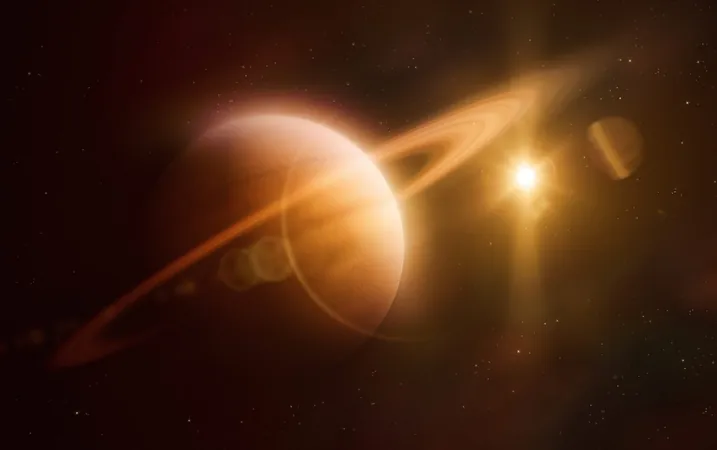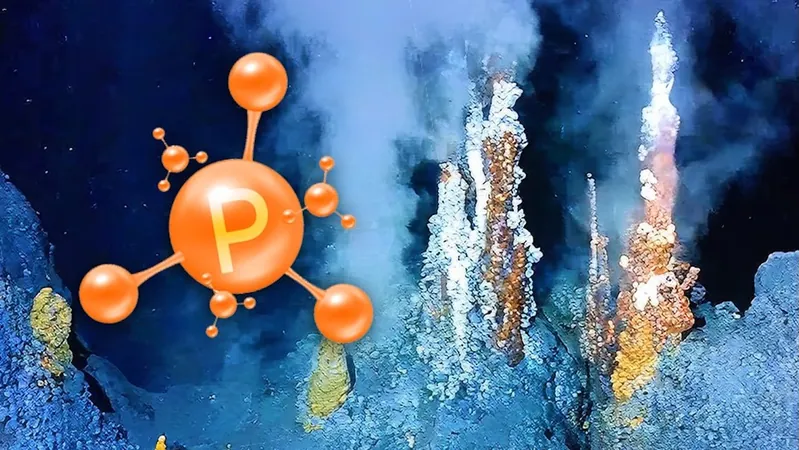
Tidal Heating: Unlocking the Secrets of Io and Planetary Evolution!
2024-09-23
Author: Li
Tidal Heating: Unlocking the Secrets of Io and Planetary Evolution!
Cornell University astronomers have delved into the fascinating planetary evolution of Io, one of Jupiter’s most notorious moons, famed for its spectacular volcanic activity. Their groundbreaking research sheds light on the pivotal role of tidal heating in the formation and evolution of celestial bodies.
What Exactly is Tidal Heating?
Tidal heating is a process fueled by gravitational interactions that profoundly influence the physical characteristics of planets and moons. Io, intricately caught in a gravitational battle with its host planet Jupiter and other surrounding moons, is subject to immense tidal forces. This relentless gravitational pull causes Io’s surface to flex and stretch, generating substantial internal heat, which in turn powers its dramatic volcanic activity. In fact, Io stands out as the most volcanically active body in our entire solar system!
Professor Alex Hayes' Insights
Professor Alex Hayes from Cornell University emphasizes the significance of tidal heating: “Tidal heating plays an important role in the heating and orbital evolution of celestial bodies.” Such insights are not merely academic; they are crucial for our understanding of how various celestial bodies evolve over time and may harbor environments that could support life.
Revolutionary Discoveries from Juno's Flybys
Using invaluable data collected by NASA’s Juno spacecraft, researchers made surprising discoveries about the distribution of active volcanoes on Io. They found that a significant concentration of these volcanoes is clustered around Io’s poles. This phenomenon suggests that the volcanoes play a vital role in regulating Io’s tidal heating processes—an essential aspect for understanding this moon’s volatile landscape.
Madeline Pettine, lead author and a doctoral student at Cornell, states, “Studying the inhospitable landscape of Io’s volcanoes actually inspires science to look for life.” Her observation underlines the importance of even the most extreme environments in the quest for extraterrestrial life.
Key Findings that Could Change the Game
Recent studies highlight that the active volcanoes at Io’s poles, including Asis, Zal, Tonatiuh, and the infamous Loki, are remarkably synchronized in their activity. Observations show that eruptions at these sites can influence one another’s brightness and behavior, an intriguing dance of volcanic dynamics that scientists are keen to explore further.
This research, recently published in *Geophysical Research Letters*, was made possible by support from NASA’s New Frontiers Data Analysis Program and the New York Space Grant. It positions Io as a natural laboratory for studying tidal heating—the key to unlocking broader implications for planetary science.
Implications for the Search for Extraterrestrial Life
Understanding Io’s volcanic dynamics not only enriches our insight into planetary evolution but also enhances efforts in the ongoing search for life beyond our planet. As Pettine reflects on the phenomenon: "They all got bright and then dim at a comparable pace. It’s fascinating to observe the interplay between these volcanoes and see how they respond to one another.”
This remarkable research underscores the intricate relationship between celestial bodies and their environments, providing a tantalizing glimpse into the processes that shape our solar system and beyond. As astronomers continue to investigate the mysteries of the cosmos, discoveries like these may one day guide us to new horizons in the search for life beyond Earth!



 Brasil (PT)
Brasil (PT)
 Canada (EN)
Canada (EN)
 Chile (ES)
Chile (ES)
 Česko (CS)
Česko (CS)
 대한민국 (KO)
대한민국 (KO)
 España (ES)
España (ES)
 France (FR)
France (FR)
 Hong Kong (EN)
Hong Kong (EN)
 Italia (IT)
Italia (IT)
 日本 (JA)
日本 (JA)
 Magyarország (HU)
Magyarország (HU)
 Norge (NO)
Norge (NO)
 Polska (PL)
Polska (PL)
 Schweiz (DE)
Schweiz (DE)
 Singapore (EN)
Singapore (EN)
 Sverige (SV)
Sverige (SV)
 Suomi (FI)
Suomi (FI)
 Türkiye (TR)
Türkiye (TR)
 الإمارات العربية المتحدة (AR)
الإمارات العربية المتحدة (AR)